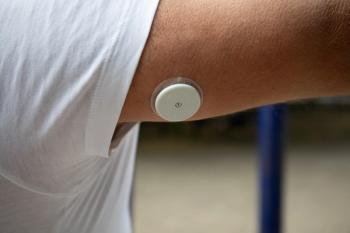
ADA 2025: Advances in Type 2 Diabetes Management With Tirzepatide
Key Takeaways
- Tirzepatide targets both GIP and GLP-1 receptors, enhancing insulin secretion and reducing food intake, which may improve insulin sensitivity and decrease glucagon levels.
- Clinical trials demonstrated tirzepatide's superior efficacy in A1C reduction and weight loss compared to placebo, semaglutide, and insulin glargine.
The session highlighted tirzepatide’s unique mechanism of action, based on comprehensive clinical data and real-world evidence.
Insights into the therapeutic profile of tirzepatide (Mounjaro, Zepbound; Eli Lilly and Company), a novel agent for the treatment of type 2 diabetes (T2D), were shared during a presentation at the 85th Scientific Sessions of the American Diabetes Association (ADA) in Chicago, Illinois, held from June 20 through June 23. The session highlighted tirzepatide’s unique mechanism of action, based on comprehensive clinical data and real-world evidence. The goal was to provide health care professionals with a deeper understanding of tirzepatide’s indications and limitations of use, helping them determine which glucagon-like peptide-1 (GLP-1) receptor agonist is best suited for their patients’ personalized treatment plans.1
The discussion featured Vivian Fonseca, MD, of the Tulane University School of Medicine, who presented an overview of tirzepatide based on the FDA-approved label and clinical guidelines. He was joined by Laura, a patient who began tirzepatide treatment shortly after being diagnosed with T2D.1
“[Tirzepatide] has been a tool that has helped me get my blood glucose under control. But more than that, I feel like I have some control over my future with type 2 diabetes,” Laura shared.1
Importance of A1C and Weight in Type 2 Diabetes
Fonseca opened the discussion by emphasizing the clinical importance of A1C and weight management in T2D. A1C levels are critical for both diagnosing and managing the disease. Despite the availability of new therapies, many individuals still fail to reach the ADA’s recommended A1C goal of less than 7%. Fonseca also noted that other organizations, such as the American College of Endocrinology (ACE), recommend an even lower A1C target of less than 6.5%.1
“In the past, you would start with diet, then add 1 drug, and when that failed, you’d add another. People kept going back up. We used to call this ‘treating to failure’ instead of ‘treating to target.’ That paradigm has changed. Now, you try to get ahead of the problem—bring A1C down below your goal, whether that’s 6.5%, 6%, or 7%—and try to keep the patient there as long as possible. The moment you see A1C rise, you adjust the medications to bring it back down,” Fonseca explained.1
Laura described the symptoms that ultimately led to her diagnosis. “I was experiencing what I now know were common symptoms of high blood sugar, such as episodes of dizziness, joint pain, and fatigue. I might have continued putting up with those symptoms, but then I started to lose my vision,” she said. “The problem is you have a very high A1C, which means you have type 2 diabetes, and that's what's causing your symptoms.”1
Obesity is a key factor in the pathophysiology of T2D for many patients. Fonseca highlighted recent shifts in ADA and ACE guidelines that prioritize early and sustained weight loss as a strategy to prevent complications.1
Clinical Data for Tirzepatide
Mechanism of Action
Tirzepatide was
Laura noted that after starting tirzepatide, she felt fuller longer after meals, which helped reduce her tendency to snack on high-carbohydrate foods.1,2
The recommended starting dose of tirzepatide is 2.5 mg once weekly for 4 weeks. If tolerated and if additional glycemic control is needed, the dose may be increased incrementally every 4 weeks to 5 mg, 7.5 mg, 10 mg, 12.5 mg, and up to a maximum of 15 mg. The titration schedule may be adjusted based on patient tolerance and glycemic goals.1
Indications and Limitations
Fonseca emphasized tirzepatide’s limitations and contraindications. It is not indicated for individuals with type 1 diabetes and has not been studied in patients with a history of pancreatitis. He also highlighted the boxed warning concerning the risk of thyroid C-cell tumors. Animal studies have shown a dose-dependent increase in these tumors in rats treated with GLP-1 receptor agonists such as semaglutide. However, it is currently unknown whether this risk extends to humans.1
Clinical Efficacy: Insights from the SURPASS Trials
The efficacy of tirzepatide has been demonstrated in the SURPASS clinical trial program, which included individuals with T2D and various comparators over 40 to 52 weeks. Fonseca noted that the trials typically involved an initial titration period.1
Across all 5 trials, tirzepatide achieved superior A1C reductions compared to placebo, semaglutide (Ozempic, Wegovy; Novo Nordisk) at 1 mg, and insulin glargine. A key secondary outcome was significant weight loss, with tirzepatide yielding greater reductions across doses and patient populations. Its safety profile was consistent across doses and comparable to that of other GLP-1 agents.1
“Today, people often start on drugs like metformin at the time of diagnosis. These data show that you can use [tirzepatide] as a first-line therapy. Often, these are people with a short duration of diabetes. But in my clinic, I also see people who have started other medications and failed, and they usually have had diabetes for a longer duration,” Fonseca added.1
REFERENCES
1. Fonseca V. “Mounjaro® (tirzepatide) Product Theater.” Presented: 85th Scientific Sessions of the American Diabetes Association; June 23, 2025; Chicago, Illinois.
2. Pharmacy Times Staff. FDA Approves Tirzepatide Injection for Adults With Type 2 Diabetes. Pharmacy Times. May 16, 2022. Accessed June 23, 2025. https://www.pharmacytimes.com/view/fda-approves-tirzepatide-injection-for-adults-with-type-2-diabetes
Newsletter
Stay informed on drug updates, treatment guidelines, and pharmacy practice trends—subscribe to Pharmacy Times for weekly clinical insights.


















































































































































































































